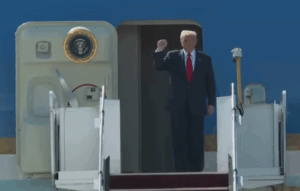TOKYO – President Donald J. Trump’s visit to Tokyo on October 28 crystallized a reset in U.S.–Japan relations: celebratory optics with Japan’s new prime minister, Sanae Takaichi, and concrete agreements on critical minerals and next-gen nuclear cooperation— even as lingering tariff threats continued to shadow the economic agenda.
Japanese and international outlets reported that the leaders signed a framework to secure supplies of rare earths and critical minerals and deepen nuclear collaboration, positioning the allies to reduce dependence on China while anchoring a wider Indo-Pacific strategy.
A “golden age” message, aimed at the region
At Akasaka Palace and during appearances with U.S. forces, Mr. Trump praised Ms. Takaichi—Japan’s first female leader—while she pledged to accelerate defense spending and cast the alliance as entering a “golden age.” Reporting in Japanese and international media emphasized Tokyo’s intention to move faster on military modernization and acquisitions, moves long urged by Washington to strengthen deterrence in the East China Sea and around Taiwan.
Trade thaw—without a full peace
The summit followed months of bruising tariff diplomacy under Mr. Trump’s second term. Japanese coverage and wire services noted that earlier agreements had begun to roll back portions of U.S. auto and other import duties that surged in the spring, though a comprehensive settlement remains unfinished. Tokyo officials said the U.S. move to reduce the auto tariff burden to about 15% marked a partial win after steep hikes, but Japanese industry still faces uncertainty pending fuller implementation.
What the Japanese press stressed
Official readouts in Tokyo highlighted the signing ceremony, working lunch, and a broad agenda: economic security, supply-chain resilience, and coordination on regional flashpoints. Domestic commentary also underlined continuity from Shigeru Ishiba’s earlier negotiations with the White House this year, which secured initial tariff relief in exchange for major Japanese investments in the United States.
International framing: minerals, missiles, and messaging to Beijing
Global outlets framed the visit as timed to president Trump’s broader Asia swing and upcoming engagement with China’s leadership. The rare-earths pact, paired with rhetoric on allied burden-sharing and new U.S. defense sales for Japan’s F-35 fleet, was read as both supply-chain hedging and strategic signaling to Beijing amid tightened Chinese export controls.
The unresolved file: tariffs and investment
Despite warm optics, business coverage continued to flag risk from reciprocal tariff policies rolled out earlier in 2025, which Japanese companies say complicate the very U.S. investments both governments now tout. Analysts caution that, absent a durable tariff settlement, trade frictions could undercut the summit’s economic-security gains.  (zai)

